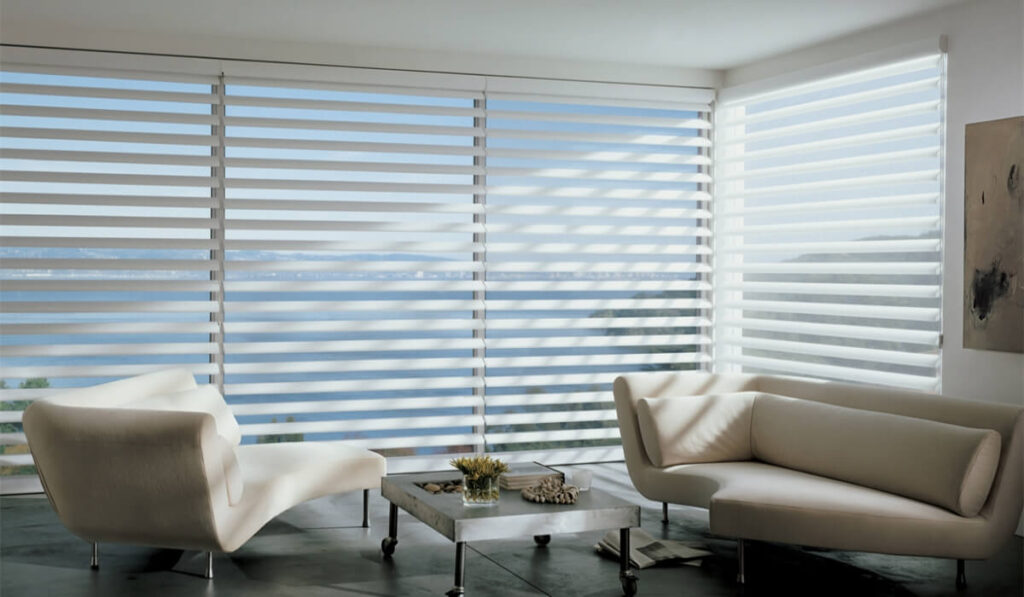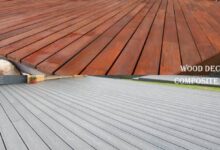Faux Wood Blinds vs. Real Wood: Unveiling the Clear Winner

With diversity in the composition of window blinds, the market has been flooded with different window coverings. All window coverings aside, faux and wood blinds have always been the talk of the town due to their similarities and differences simultaneously. Which one is better? Which one should you choose?
Below, we will distinguish the main differences between these two popular blinds to answer all these questions. By comparing multiple factors, you can make your choice easy between faux wood and real wood blinds.
Faux Wood Blinds vs. Real Wood: Unveiling the Clear Winner
- Material Composition
The composition of real wood blinds is extracted from organic material from nature like wood. Wood has different types, so ultimately the variety of real wood varies with the type of wood, such as oak, bamboo, or cherry.
Faux wood blinds are a mimic texture of real wood blinds with a mixture of materials like synthetic fibers, Polyvinyl Chloride (PVC), vinyl, and a combination of wood grains. Some faux wooden blinds are also made with lightweight elements like high-density resins, polyurethane, and hemp.
Verdict:
Although real wood window blinds are made from genuine material, they are non-recyclable, thus less sustainable. Moreover, the use of organic material makes them more expensive and less accessible to everyone.
On the contrary, faux wood window blinds are an innovative window covering solution that not only provides the look of natural wood but also highly sustainable and eco-friendly.
- Aestheticity
Real wood window blinds offer natural warmth and an earthy tone characteristic to your space. These blinds don’t have a range of colors to compete with specific color schemes of your home. However, they are customizable, and you can DIY them by painting different colors.
Faux wooden blinds are available in a variety of textures and grain patterns. They have built-in multiple options of stains and finishes. You can select from a diverse range of tones and textures.
Verdict:
If you’re a vintage home décor enthusiast and looking for genuine window wood coverings, these blinds are for you. If you want to play with creativity and more personification in your home’s interior values, faux wood blinds are a more convenient option for you.
- Moisture Resistance
Although Real Wood Blinds are made with natural substances and have a presumed composition of high-density materials, they are not moisture-resistant. When these blinds are exposed to areas with high humidity, they can lose their rigidity and can easily be ductile.
Faux wood blinds are ideal blinds for areas with high humidity and are highly moisture-resistant. They are not prone to water and can retain their original elasticity and shape for many years effortlessly.
Verdict:
If you’re looking for window blinds for rooms like lavatory, laundry, and kitchen, then faux wooden blinds would be perfect partners for the windows.
- Maintenance
Natural wood blinds are high-profile window blinds and need proper care and frequent cleaning for their functioning. Plus, these blinds are susceptible to cracking and stains easily.
Conversely, faux wood blinds are highly easy to clean and shut-off. They need a low-key maintenance routine to keep them for many years. Unlike the periodic maintenance of real wood blinds, these blinds don’t need sealants or special treatment.
Verdict:
If you’re a busy person and cannot afford to do dusting of your window blinds on a regular note, then faux wooden blinds are a more feasible option for you. They require less time and energy for their maintenance.
- Life Span
Due to the high maintenance effort required by natural wood blinds, their lifespan depends on the condition of the environment. If they are subjected to high humid areas and prone to dust and debris, they may not last long.
The longevity of faux wooden blinds is not dependent on the environment. These window blinds tend to have a longer lifespan as they have more friction to the environment and possess high durability compared to wood blinds.
Verdict:
If you are a person who prefers home renovation after years and can afford maintenance of natural wood blinds, then you can go for it. However, in case you’re looking for an efficient solution to your windows and want to save you from the hectic of maintaining blinds, faux wooden blinds got your windows covered.
- Cost
The use of organic elements in the making of natural wood blinds comes with premium price tags, and their starting price range from installation costs starts from $50 to $200 or more per blind in Canada.
On the other side, faux wood blinds mimic the nature and appearance of real wood blinds, so they cost less and are budget-friendly. The average price per blind of faux wooden blinds in Canada starts from $20 to $100.
Verdict:
If you’re looking for a window blind for aesthetic appearance and functionality both, faux window blinds are worth the investment. However, if you want wood blinds just to add a luxurious touch to your interior, you can go for the wood blinds.
Conclusion:
In a nutshell, faux wooden blinds are more reliable in terms of functionality and durability. They are cost-effective and easy to maintain. Wood blinds are ideal for luxurious farmhouses, hotels, and mansions. For the residential sector, faux wooden blinds are a trustworthy and popular choice of homeowners.





